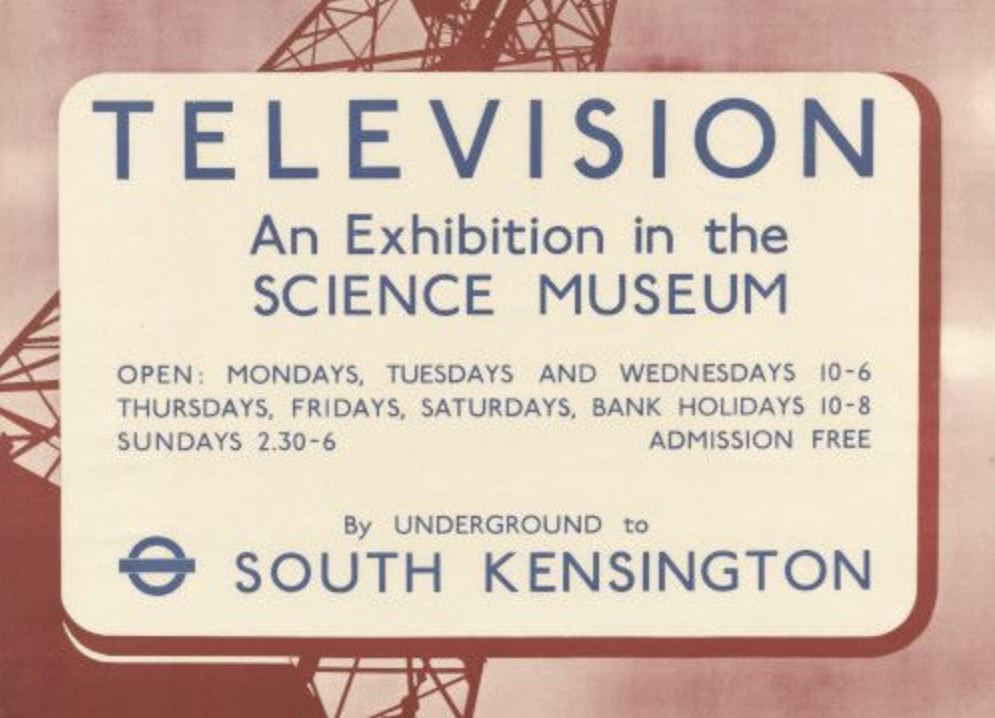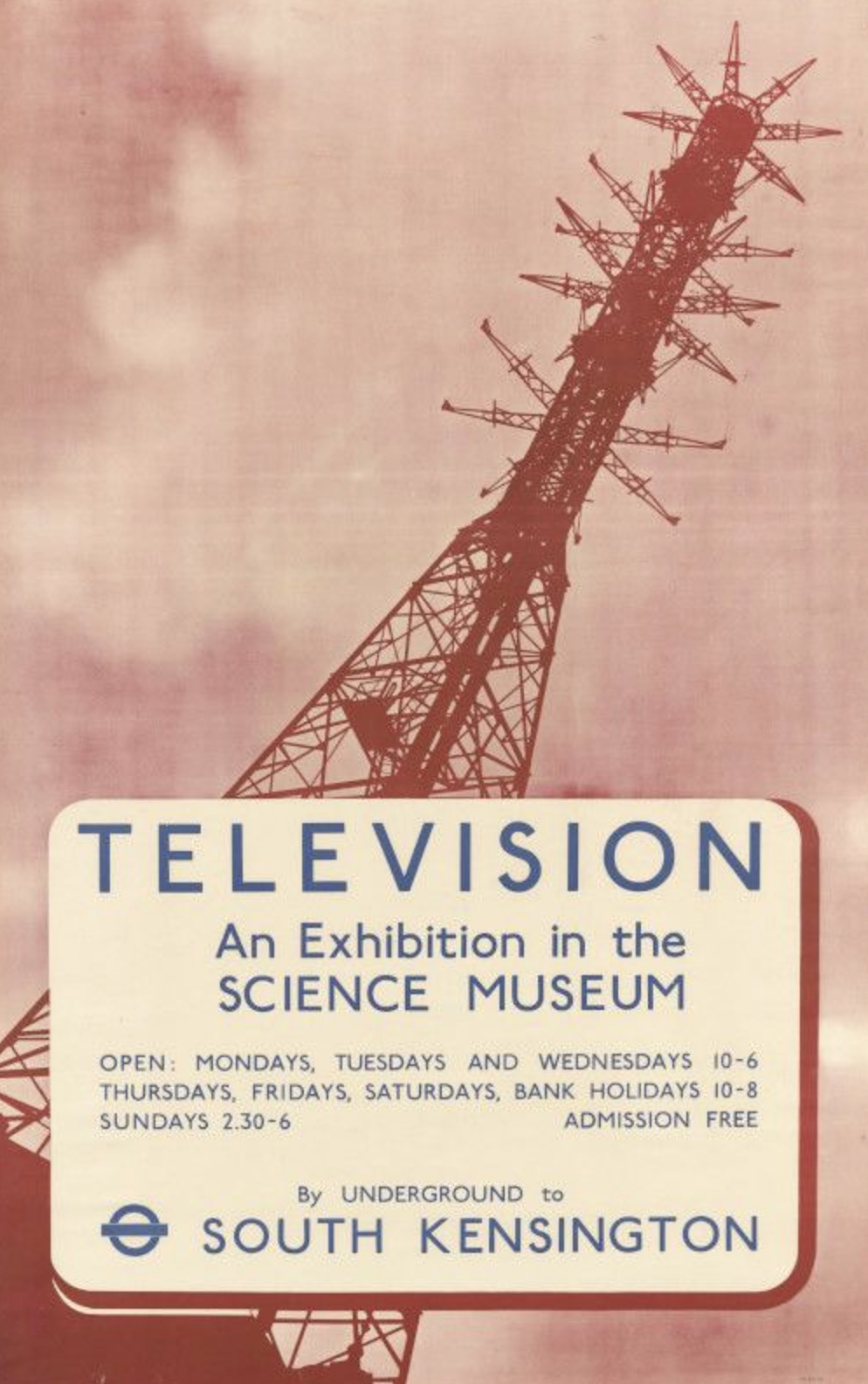OTD in early British television: 11 June 1937

John Wyver writes: Friday 11 June 1937 saw the nation’s broadsheets carry news of the opening the previous day of an exhibition of television at London’s Science Museum in South Kensington. Television in the summer of 1937 was still a more common spectacle in department stores and pubs than in homes. And it was extended as a public form in this hugely popular presentation.
As the Manchester Guardian reported:
The BBC, the leading manufacturers, and the science museum have organised the exhibition, and its objects are to illustrate the general principles underlying technicalities and to foster appreciation of television as a home entertainment.
In fact, the Science Museum offered a last hurrah for showcasing television’s origin in the workshop and its identity as a technological wonder. In future exhibitions, such as Radiolympia later in the year and in the 1938 Ideal Home Exhibition, it would be celebrated more as a medium and as an element of domestic modernity.
The museum had been founded in 1909 as an institution separate from other South Kensington collections, but its first substantial buildings were only completed in 1928. Initially operating as a repository for historical instruments and machines, with an appeal primarily for experts, it began to orient itself more to a general audience in the 1920s during the directorship of Sir Henry Lyons.
The much-loved Children’s Gallery was introduced in 1931, and in the pre-war decade the museum organised shows focussed on contemporary scientific developments, of which the ‘Television’ exhibition was one. As a report noted of the display, ‘Its purpose is to enable the general public to appreciate the amount of development that has taken place and to show historically how the present high standard has been reached.’
As such it extended the stagings of the medium as a scientific and technical achievement and a marker of progress, as well as — drawing on taken-for-granted nationalism — an exclusively British project; there appears to have been no mention in the show of developments in Germany, France or the United States.
On view from 10 June until September, the free attraction, mounted just inside and to the right of the museum’s main entrance (roughly where the welcome desks and a shop are today), was laid out across two galleries. In the larger one twenty or so conventional display cases featured historical and contemporary items of technology supplied by manufacturers.
Adjacent to this was a room with a line of eight receivers, each from a different firm and each cocooned in a curtained booth. In a blurry press photograph queues of eager patrons can be seen waiting for their glimpse of a working screen. The sets showed the BBC service when it was on air, and at other times they presented material, including documentaries from G-B Instructional Films, delivered from a local CRT film transmitter set up by Cossor in the main space.

Across the room from the line of sets, Scophony ran a separate theatre demonstrating for the first time in public their optical-mechanical rear projection systems, the larger of which presented a 240-line image of almost 2 metres by 1.3 metres. Pictures for this came by radio link from the company’s laboratories in Holland Park.
Shortly after the opening, Wireless World enthused:
The Television Exhibition is proving to be one of the biggest draws that the Science Museum at South Kensington has ever had in the way of a special show. A daily attendance of over 2,000 is reported. There is no question that the public in general is eager to know as much as possible about television, wants to see demonstrations of reception, and having seen them, is loud in its praises of the clearness and the steadiness of the images.
Yet the overall presentation, like the accompanying booklet, was almost exclusively technical, attracting ‘the criticism that there is much at this exhibition that the average person cannot understand, and that the many details are bewildering.’ The worry was that this would reinforce perceptions that operating a receiver required expert knowledge.
Nonetheless, with eye-catching posters that featured the AP transmission mast adorning the Tube, the show was remarkably popular, attracting an estimated quarter of a million visitors and selling out the edition of 10,000 booklets.

[OTD post no. 176; part of a long-running series leading up to the publication of my book Magic Rays of Light: The Early Years of Television in Britain in January 2026.]
Leave a Reply